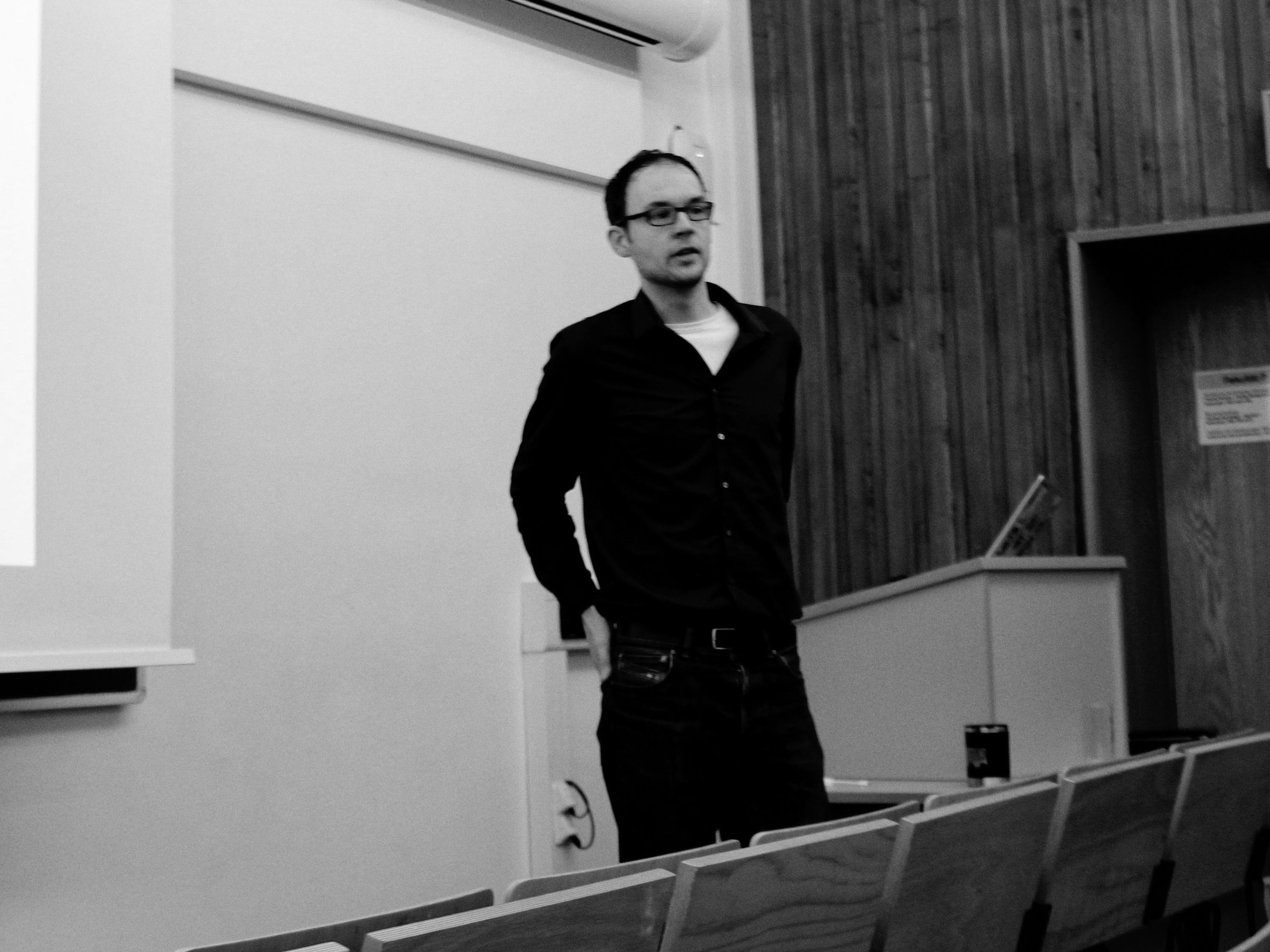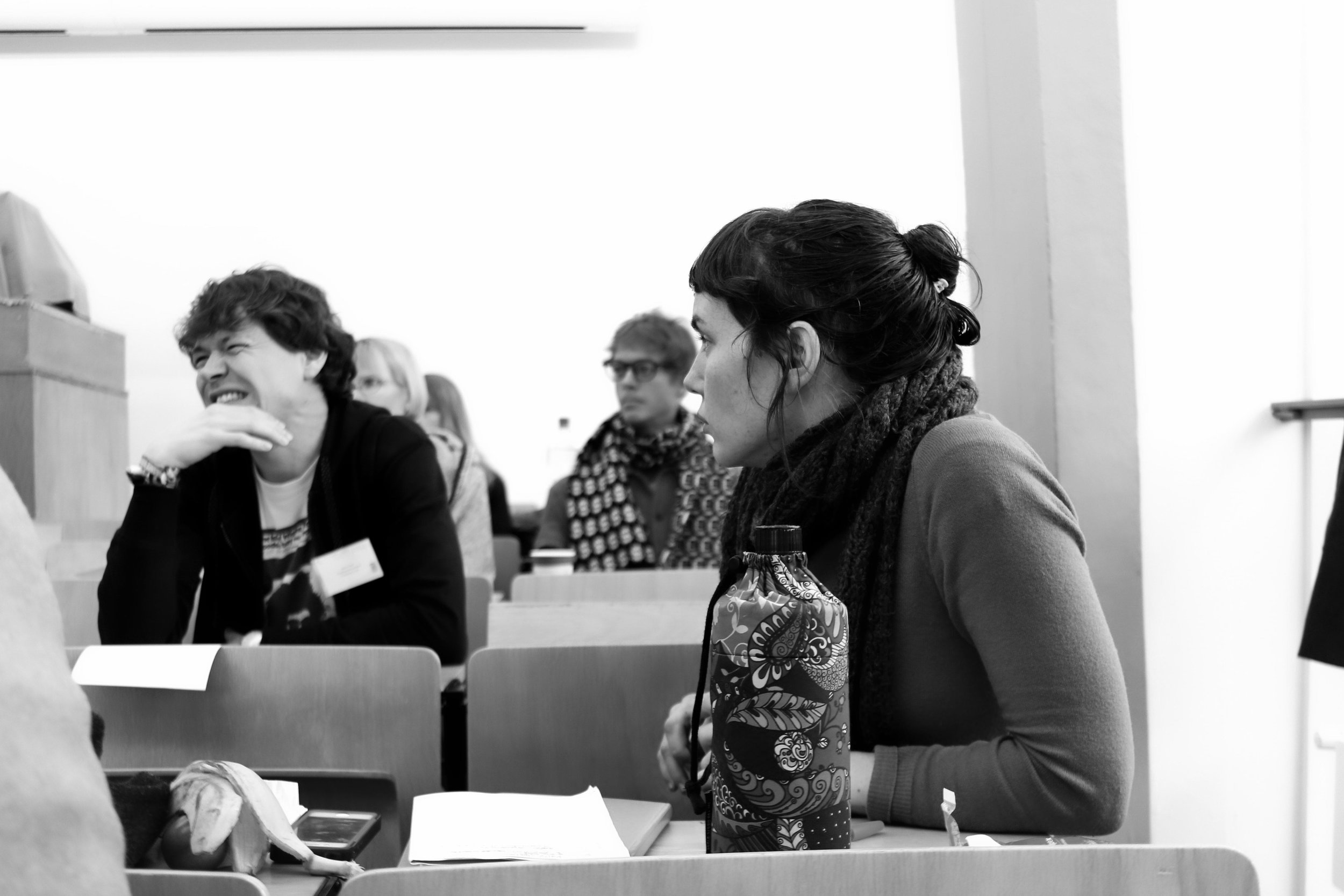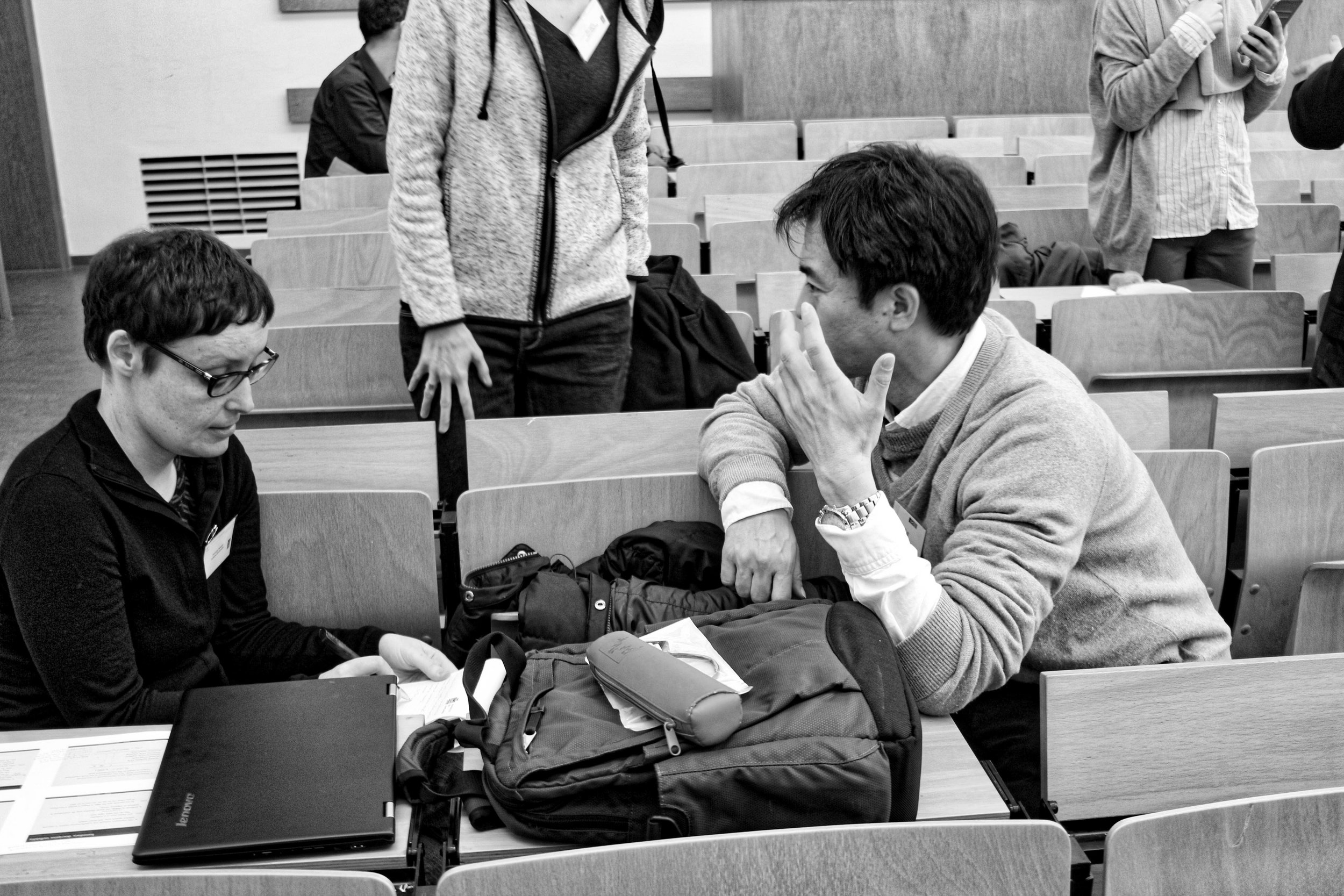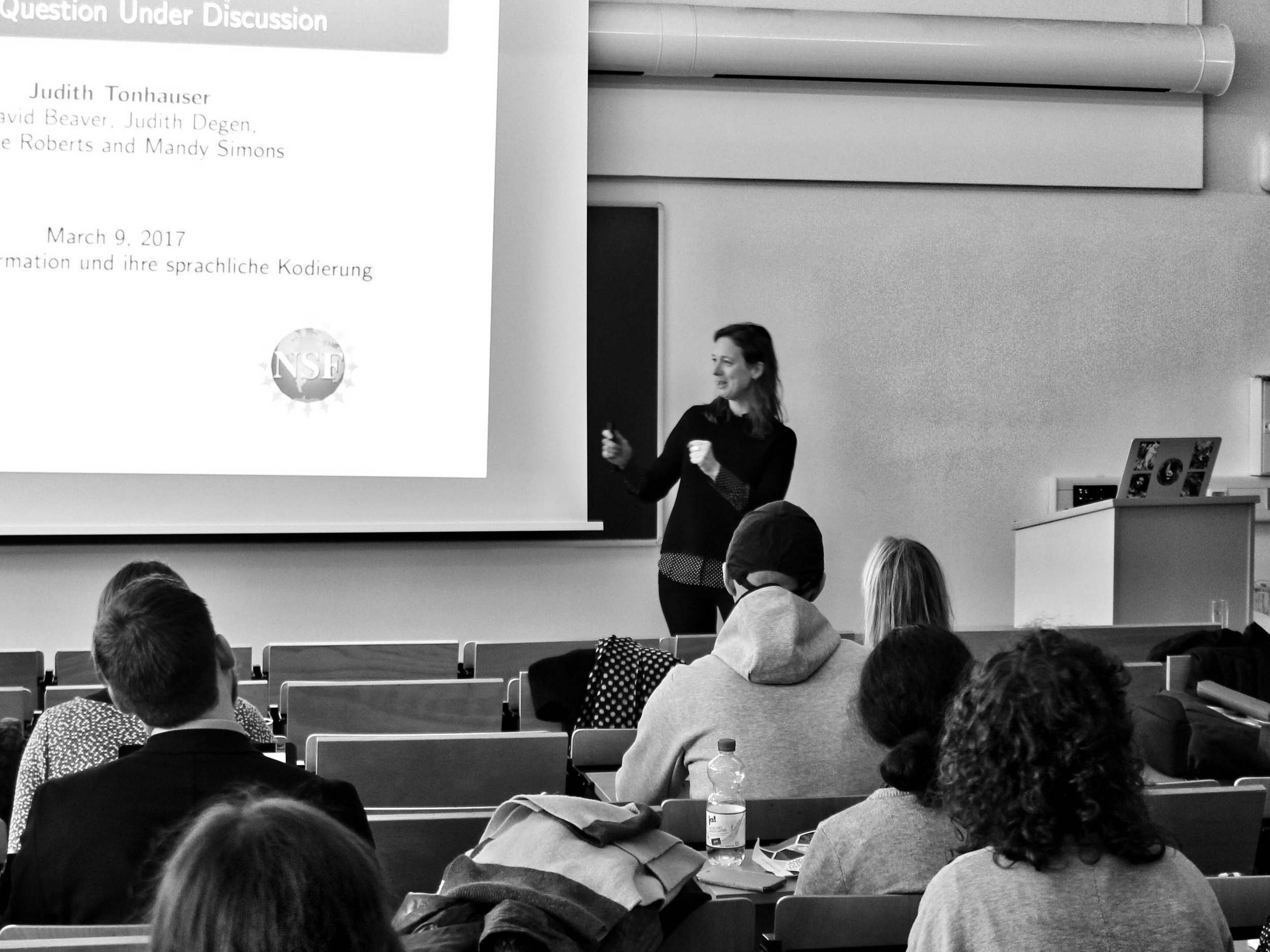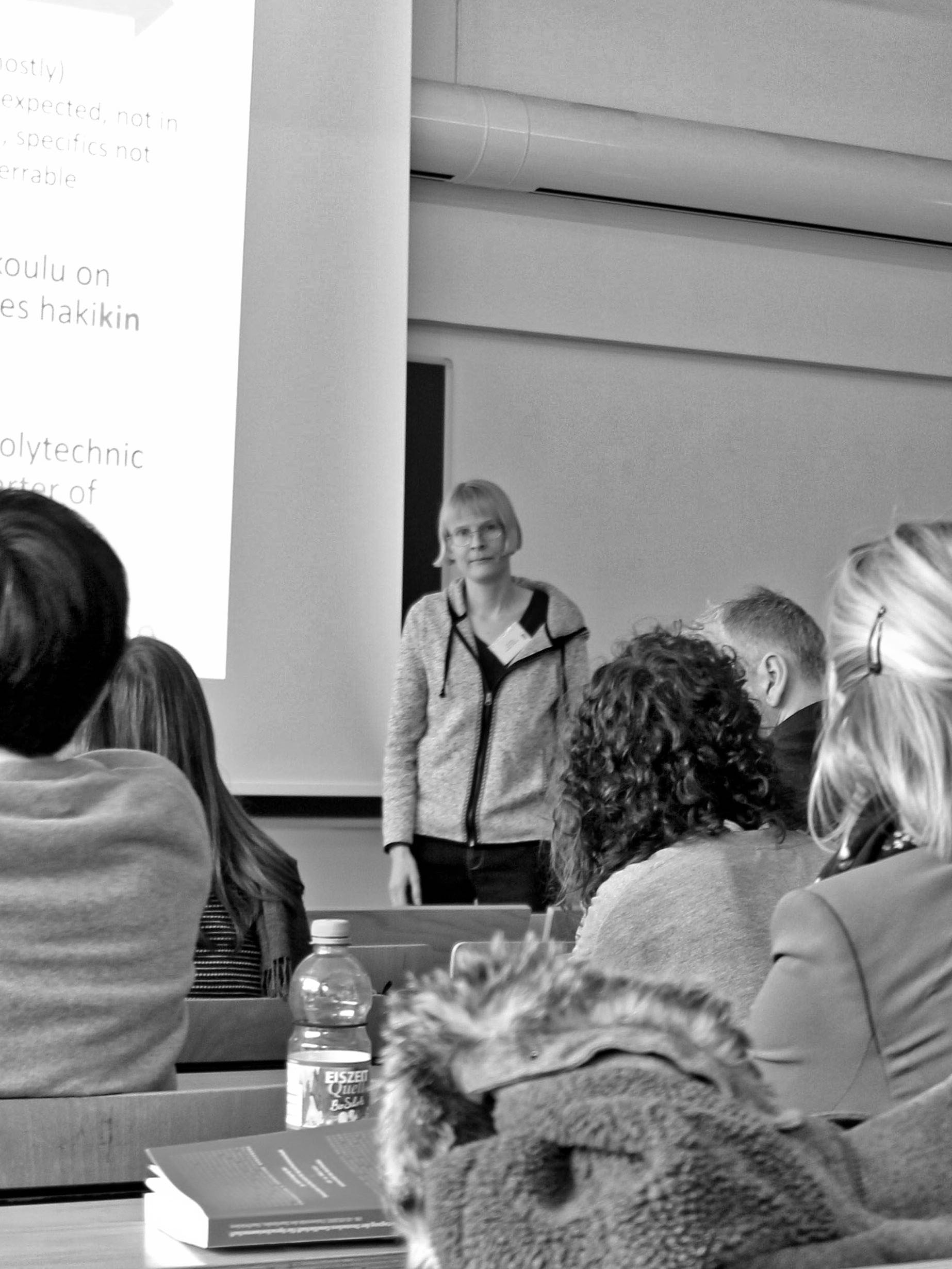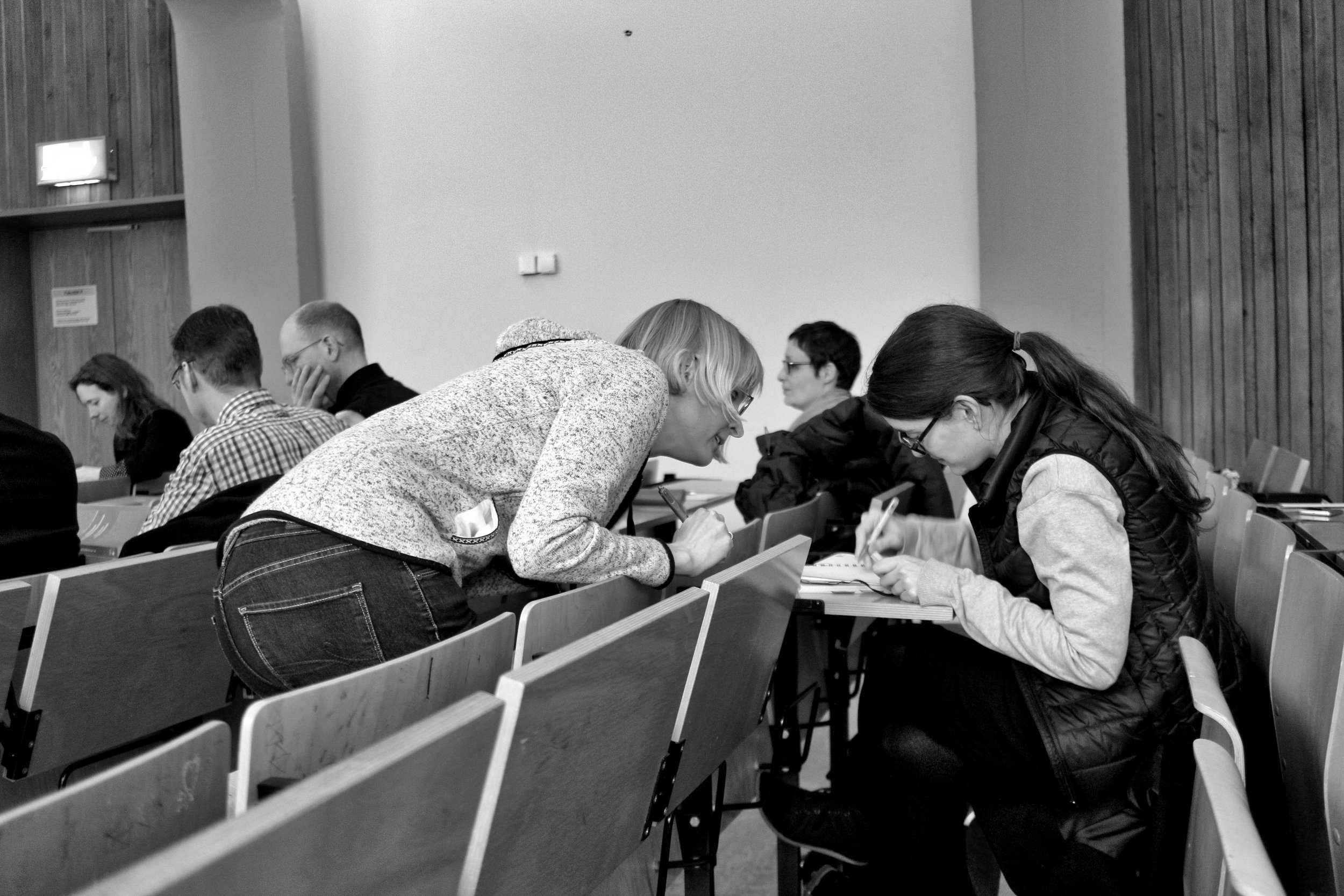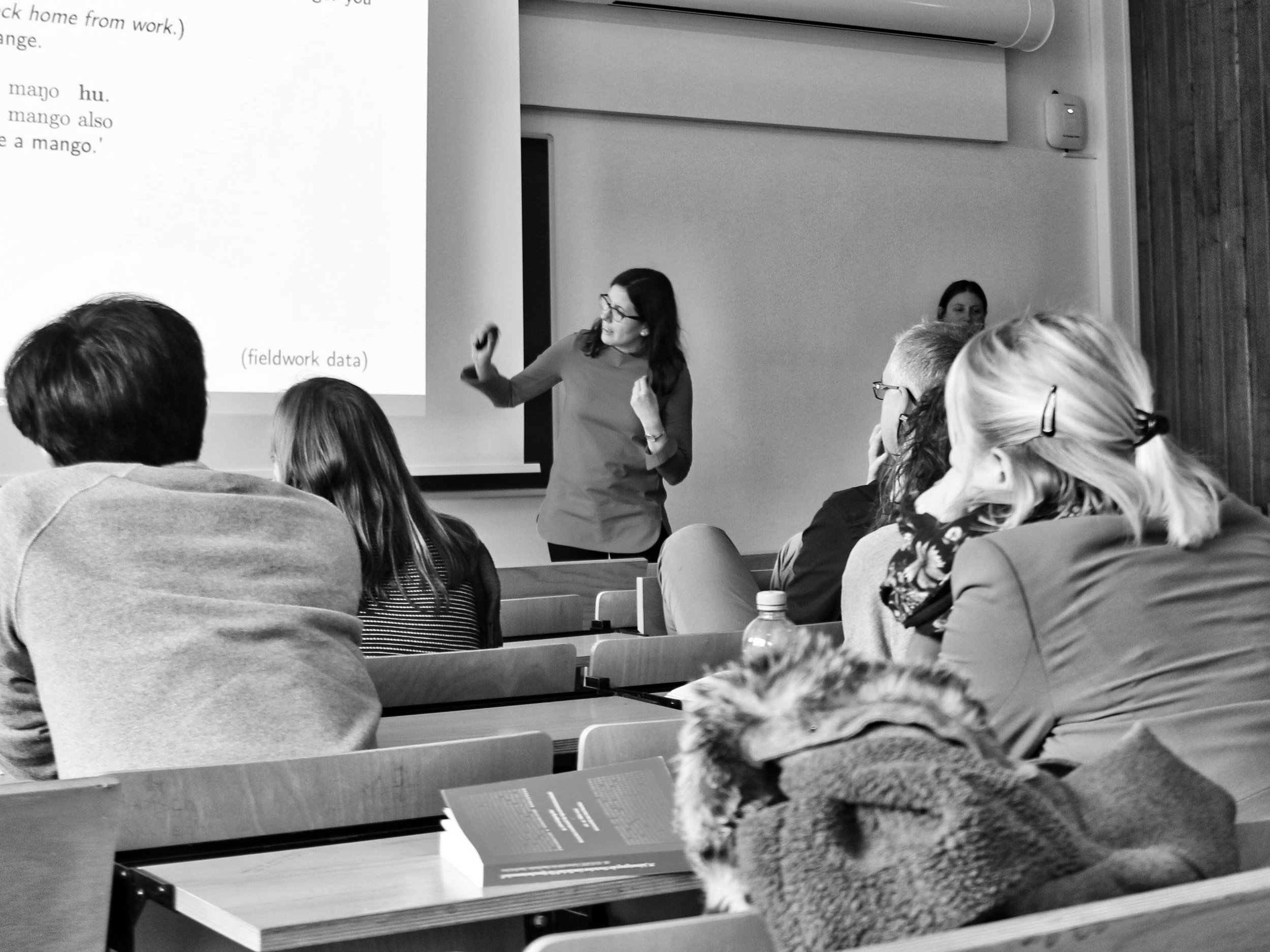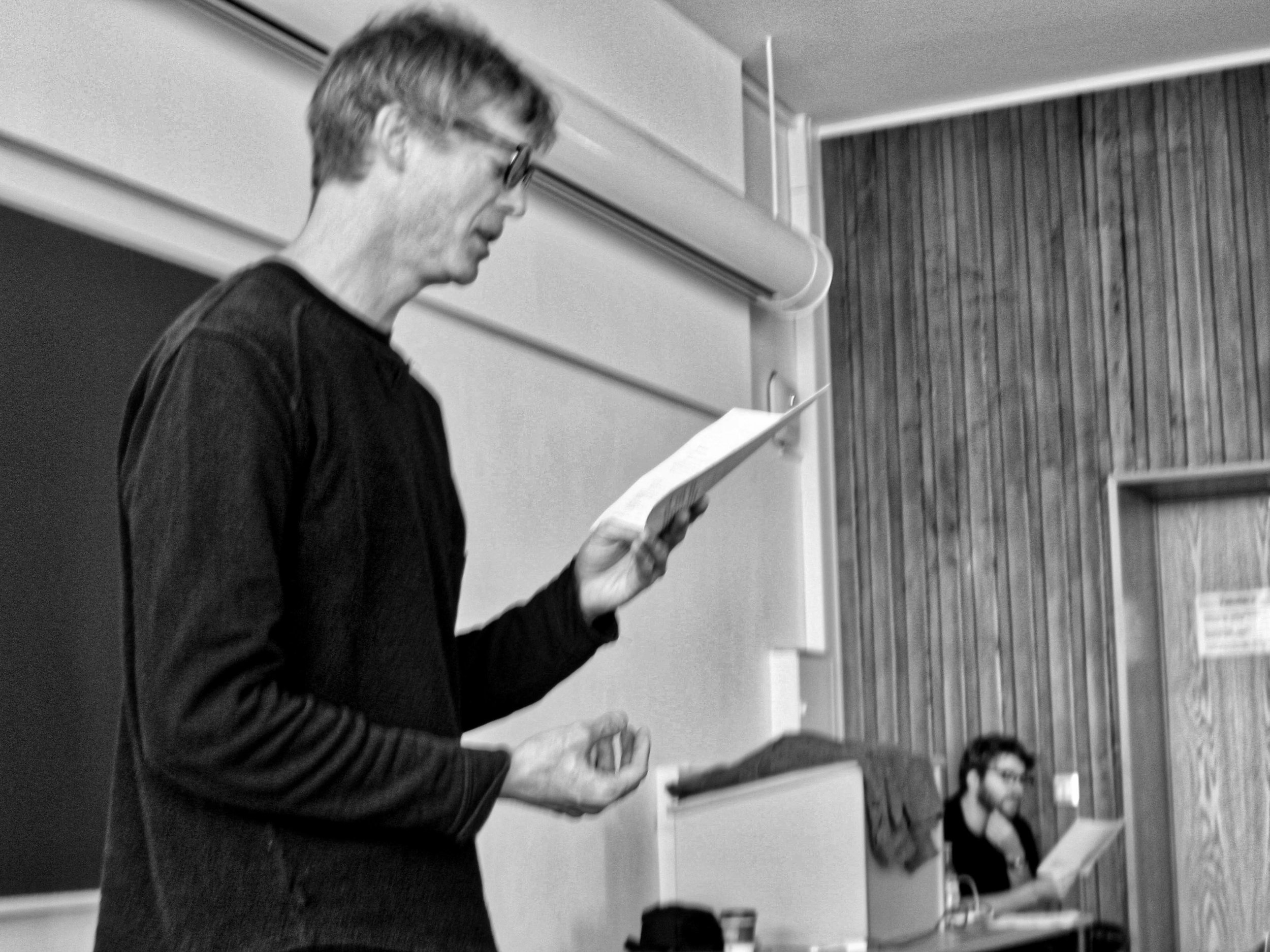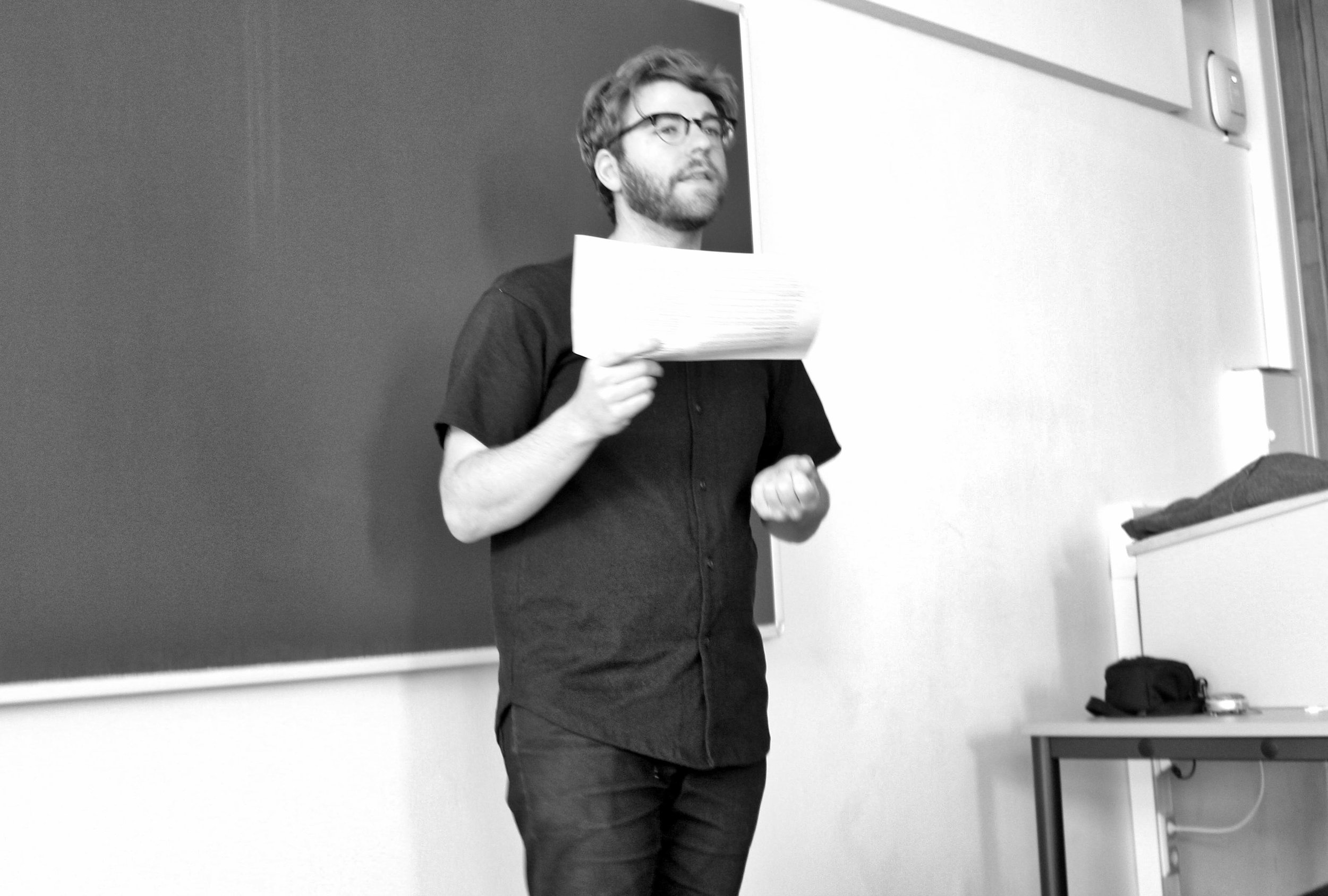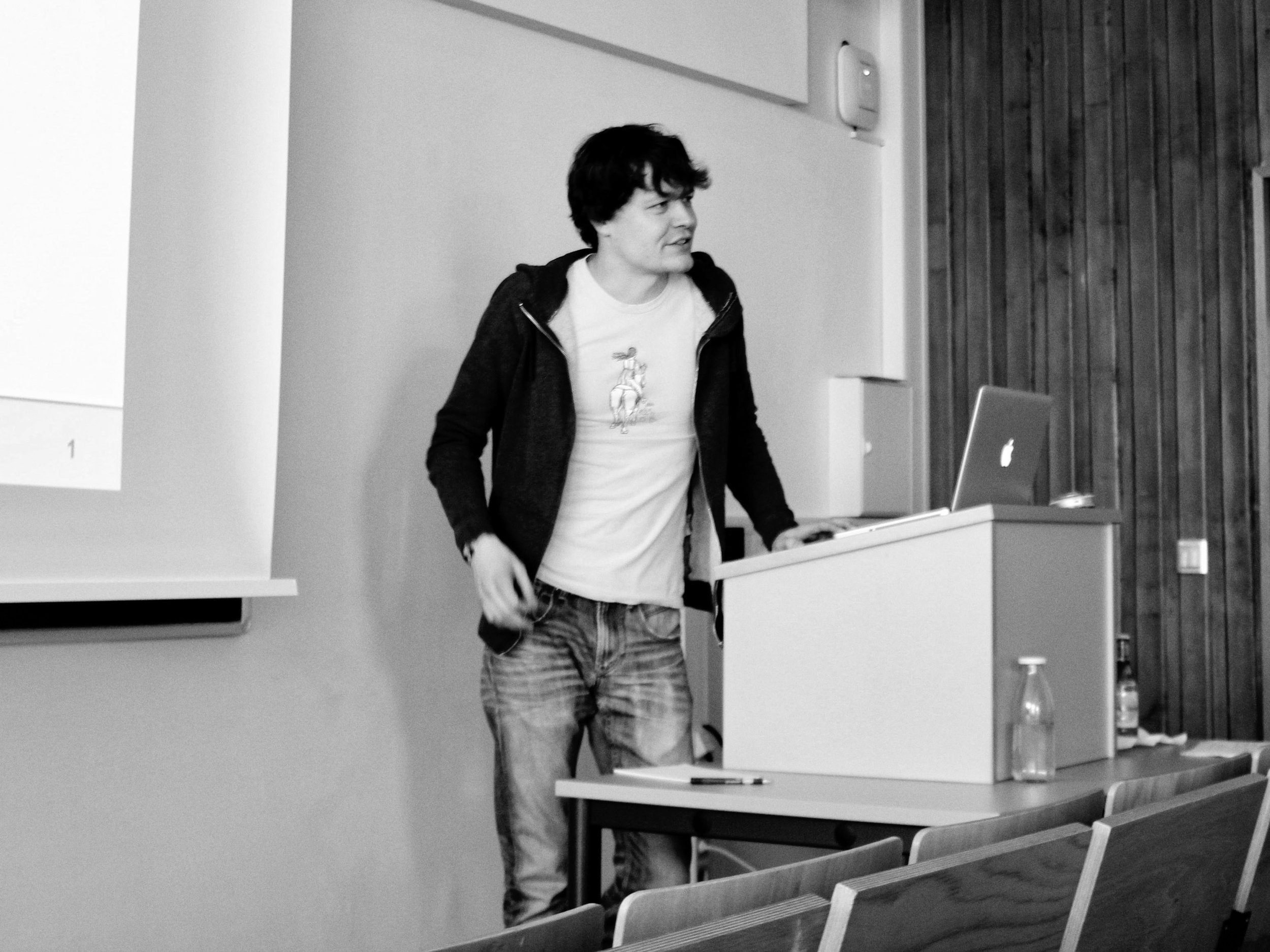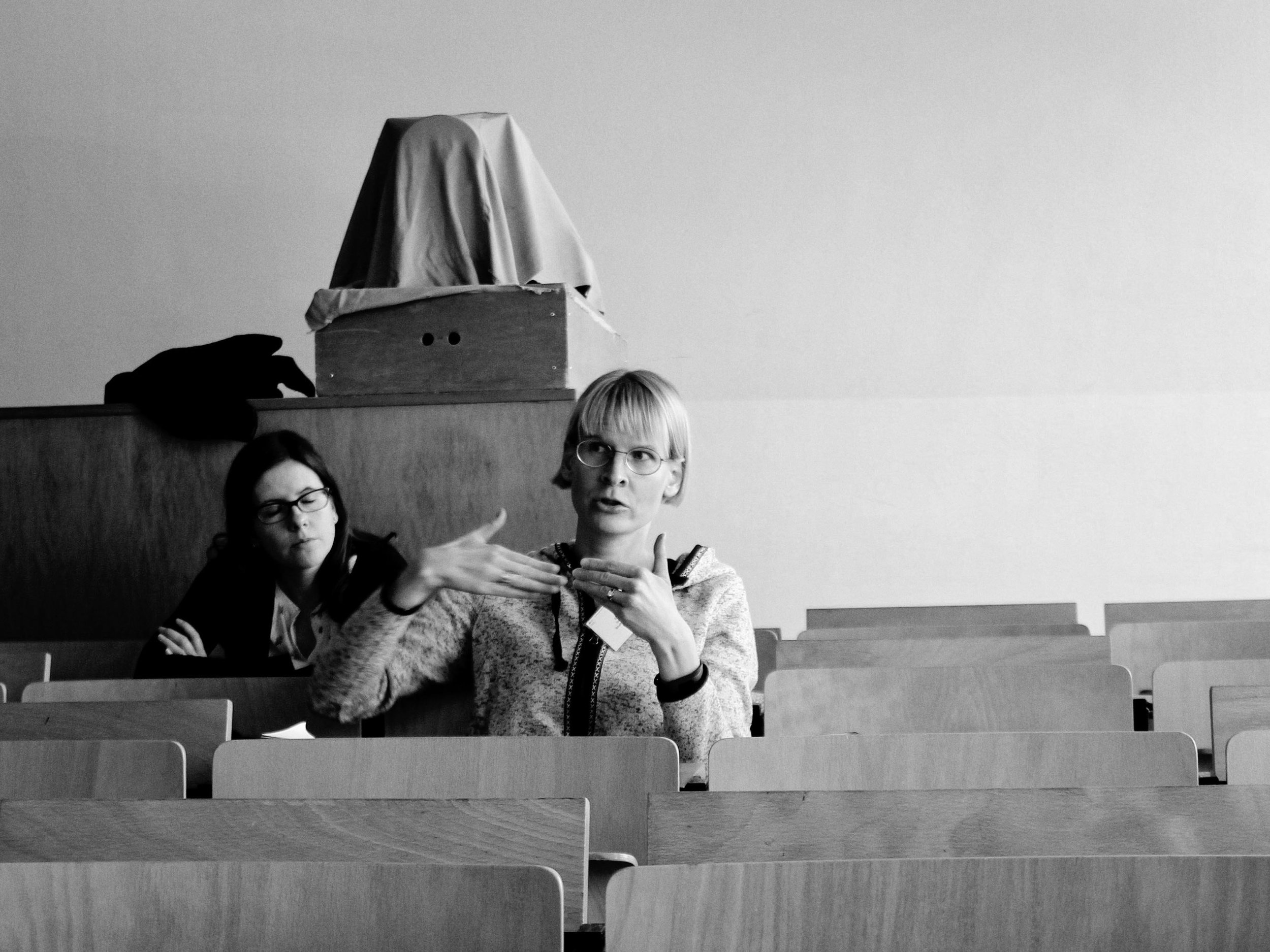From March 8-10, Katharina Turgay (who unfortunately could not attend) and I organized a workshop on secondary content and linguistic encoding, which was part of the 39th annual meetig of the DGfS at Saarbrücken. This is a short report of the workshop for those who didn't attend but nevertheless are interested in the topic (and for those who did attend but would like to refresh their memories).
Overview
In addition to expressing some main or primary content, an utterance often conveys secondary information. Under this term, we think of content that is not the “main point” of the utterance, but which rather provides side or background information and which is less prominent than the main content. Secondary content – which in recent literature is often called “non-at-issue content” – often also shows distinctive behavior with respect to its role in discourse structure and which discourse moves it licenses. Linguistic phenomena that fall under this category are, for instance, appositives and non-restrictive relative clauses, presupposition triggers, expressive adjectives, interjections and many more. This workshop brought together linguists working on secondary content in order to tackle, amongst others, the question of what kinds of secondary meaning exist, if they can receive a unified characterization (and treatment) and how they influence the progression of discourse structure.
Stats
In addition to a short introduction by the organizers, 17 papers were presented at the workshop, which featured a total of 25 authors, 14 of which were women (56%). The talks by Ana Aguilar Guevara (National Autonomous University of Mexico) and Dirk Kindermann (University of Graz) had to be canceled unfortunately, but fortunately, we had to alternates jumping in for them so that all slot allotted to the workshop were actually filled. Half of the speaker (13) of the authors had, at the time of the workshop, an affiliation in Germany, while 6 came from other European countries, 4 from the USA and 2 from Japan. The submitted talks were 20min long with 10min for discussion, while the two invited talks were given an entire hour. The atmosphere of the workshop was very friendly and lively with a lot of constructive discussions and cross-references between the different talks. A publication based on the workshop is planned and most participants already agreed to contribute to it.
Day 1
After a brief introduction by one of organizers, Stefan Hinterwimmer (University of Cologne) talked about his discovery that the Bavarian discourse particle fei functions as a marker of secondary content. That is, fei only is infelicitous if it targets content that is not primarily expressed. Hinterwimmer shows that it may target parentheticals, presuppositions, and even conversational implicatures and other contextually inferred proposition, but crucially not the main content of an utterance. Therefore, fei is sensitive to the distinction between primary and secondary content and functions as a marker of the latter.
The role played by secondary content with respect to quotation is what Holden Härtl (University of Kassel) investigated. He analyzed scare quotes in the context of sogenannt (“so-called”). He concludes that its distancing use involves three components: i) the mentioned names has been used before, ii) the referent does not fit the literal meaning of the mentioned expression, and iii) a negative speaker evaluation. Härtl assumes that the first component is presupposed, while the latter two are not. Using an answer-assessment experiment, Härtl shows that the second and third component seem to be more at-issue than standard conversational implicatures, but less then ordinary semantic entailments. This leads to the interesting question of whether there are various degrees of (non-)at-issueness.
Laura Dörre (University of Konstanz), presenting joint work with Josef Bayer, reported another empirical experiment comparing modal particles like bloss and nur with their non-modal, main counterparts. Using self-paced reading methods, she finds that they induce different processing patterns: modal particles show higher processing cost right after the particle, while their main-content counterparts show higher processing costs at the end of the sentence. The talk inspired discussion about ways to experimentally distinguish between secondary and main content in general and if we should actually expect a processing cost for one or the other.
Elena Castroviejo Miró (Ikerbasque and UPV/EHU) and Berit Gehrke (CNRS-LLF/Paris Diderot) talked about intensifying uses of good as in a good breakfast, focusing mainly on data from Catalan. Starting from the assumption that this additional meaning is secondary information, they show that this leads to some troublesome predictions, and they propose an alternative approach under which the intensifying meaning arises if the extension of the modifying noun is (contextually) ordered uni-dimensionaly, so that good relates to big.
While expressives in general are assumed to receive a speaker-oriented reading by default, Osamu Sawada (Mie University) shows that the Japanese expressive motto can only receive a speaker-oriented reading if there is a speaker-oriented modal in the main clause. To account for this, he extends a multidimensional semantic system with a mechanism that can transfer expressive content to the at-issue-dimension. The discussion of his lead to interesting questions about the predictions of his approach, namely that one of the consequences of his implementation is a shift together constraint.
Claudia Borgonovo (Université Laval) talked about concessive clauses and addresses the question of what the status of the proposition inside the concessive clause is. She argued that it is not main content – it projects but can be dismissed – but has, rather, the status of a secondary assertion, and not that of a conventional implicature or a presupposition; a category that should be included in the inventory of classes of secondary content.
Day 2
Matthijs Westera (University of Amsterdam), who jumped in for the canceled talk by Dirk Kindermann, started the next day and talked about rise-fall-rise intonation and the question under discussion. Building on previous work on the meaning of boundary tones, he assumes that rise-fall-rise intonation signals both compliance and non-compliance with conversational maxims. If one assumes that there is more than one conversational goal, aka question under discussion, an utterance can comply with the maxims regarding one goal, while being non-compliant regarding the other question.
Kalle Müller (University of Tübingen), filling the void left by Ana Aguilar Guevara, talked about sentence adverbials and (non-)at-issueness, focusing on their projection in conditionals and whether they are at-issue and thus part of the restriction. Using examples taken from Cosmas II, Müller shows that every subclass of sentence adverbials is able to provide secondary information and can project from conditionals. He sketches how an approach based on viewpoints and perspectivity could account for the observed variability. He then shows that the fact that an adverb can project can be traced back to lexical variation regarding the perceptivity of an expression.
Patricia Amaral (Indiana University) presents data from European Portuguese that show that some full NPs (like o senhor “the sir”) have uses as 2nd person singular pronouns that come with multidimensional content: they refer to the addressee, ascribe some property to the addresses, and have use-conditional meaning insofar as they encode the social relationship between the interlocutors. Amaral provides a description of the various restrictions that hold for these pronominal NPs and how the different layers of content interact with each other.
Judith Tonhauser (Ohio State University) gave the first invited talk and discussed various issued concerning the idea of relating not-at-issueness to the question under discussion. Starting from a question-based characterization of at-issueness, she shows that this predicts variable at-issueness of obligatorily local contents, before illustrating how this approach can derive various properties observed about secondary content. She concludes with the results from two experiments that explore the at-issueness of varieties of projective content and show that projective content tends to be non-at-issue, as predicted by their approach, but also reveal more fine-grained variation, both between lexical expressions and also between speakers.
Mira Grubic (University of Potsdam) discussed additives particles like too and why their presuppositions are hard to accommodate. She discusses two approaches: according to the first, additives presuppose the truth of a salient parallel proposition; according to the second, they presuppose the existence of another salient individual. Grubic reports the results from an experiment comparing possessives with additives. While the second approach seems to be better suited to explain the data of her experiments, it cannot explain why additives are judged to be acceptable in neutral contexts. She suggests the quantifiers may be the reason.
Elsi Kaiser (University of Southern California) investigated noun-attached scalar/additive clitics in Finnish and how they give rise to the implicature that the event may be expected (instead of the usual unexpectedness-implicature). She suggests that differences in the non-at-issue meaning conveyed by noun-attached vs. verb-attached clitics stem from verb-attached clitics providing secondary information, not about the verb, but rather about the entire event. In addition, the data Kaiser presents seems to pose problems for standard analyses of scalar additives like even that are based on likelihood scales, and seem to instead call for an approach that is based on the discourse management function of thus expressions.
Agata Renans (Ulster University) and Nadine Bade (University of Tübingen), presenting joint work with and Joseph P. DeVeaugh-Geiss, University of Potsdam), talked about the obligatoriness of additive particles and its relation to exhaustivity implicatures. They contrast previous work on additives in German with new experimental results from Ga (Kwa). They show that while the data from Ga can be account for by the principle of maximize presupposition, an approach that is based on obligatory implicatures predicts an additional influence of whether an exhaustivity implicature is made prominent in the discourse. This has been attested for German in previous experiments, but does not hold for Ga. This points to cross-linguistic variation in pragmatics.
Day 3
The third day started with the second invited talk by Robert Henderson (University of Arizona) and Eric McCready (Aoyama Gakuin University), who took up the recent topic of dog-whistles and approached the question of they can be situated regarding the at-issue/non-at-issue distinction. They introduce a new kind of distinction between two types of dog-whistles: one in which the “whistled” content is just added on top of the primary content and one in which the meaning of the whistling expression is actually changed for hearer that do get the dog-whistle meaning. Using game-theoretic tools, they show that dog-whistles are only felicitous in certain context, namely if you have a mixed audience and the payoff of getting the whistled content across exceeds the danger of being caught by the opposing audience.
Alex Thiel (University of Frankfurt) presented work he carried out with his colleagues Corinna Trabandt, Emanuela Sanfelici, and Petra Schulz on the role played by prosody to mark secondary information in the case of distinguishing between restrictive relative clauses, which are main content, and appositive relative clauses, which convey secondary information. Presenting the results from two experiments involving some selecting tasks, the data strongly suggest that prosody alone is not sufficient to unambiguously mark a relative clause as conveying secondary content, contrary to some influential semantic approaches. Instead, factors like the head noun seem to have a strong influence as well.
Approaching the topic from a very different perspective, Alexander Haselow (University of Rostock) investigates shifts from primary to secondary information in spontaneous speech. His data shows three main uses of secondary content: providing background information, indicating the speaker’s stance, or providing information to supports the speaker’s credibility. Regarding the form, if secondary content is injected into main content, it can be observed that even though speakers seem to remain aware of the incompletion of an initial structure, their continuations do not necessarily resolve the syntactic structure of the initial structure
Mikaela Petkova-Kessanlis (Sofia University) presented a case study on the use of parentheticals in linguistic textbooks, which were set off from the main content by means of brackets or dashes. She investigated the range of illocutionary acts that are performed by the parentheticals in her corpus and identifies a lot of different functions (like exemplifying), but concludes that one of the main points is that such texts have more than one addressee (and hence involve different questions under discussions).

